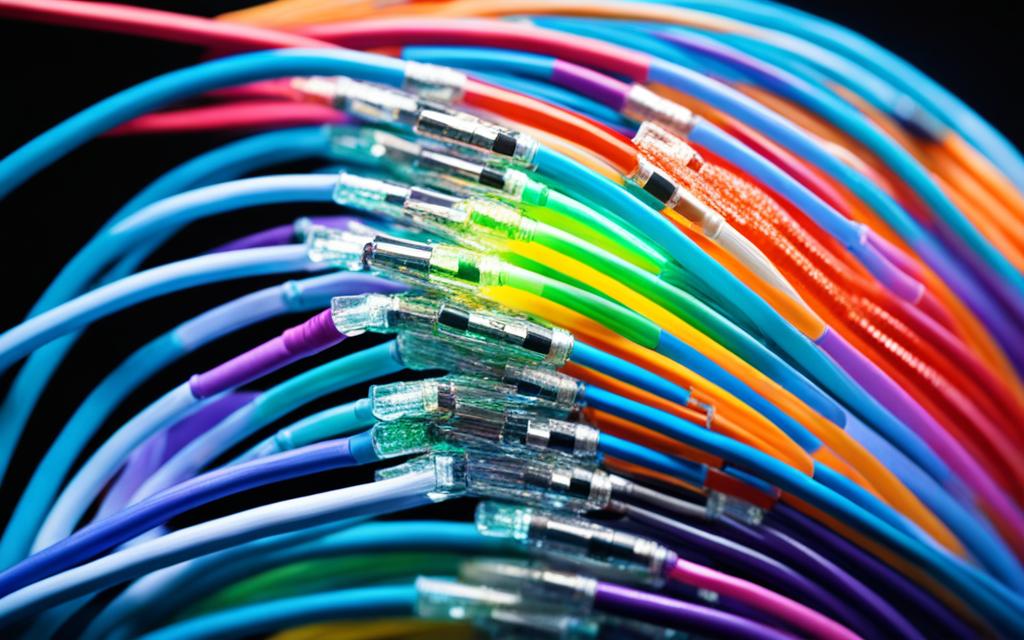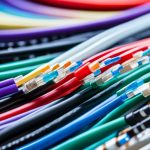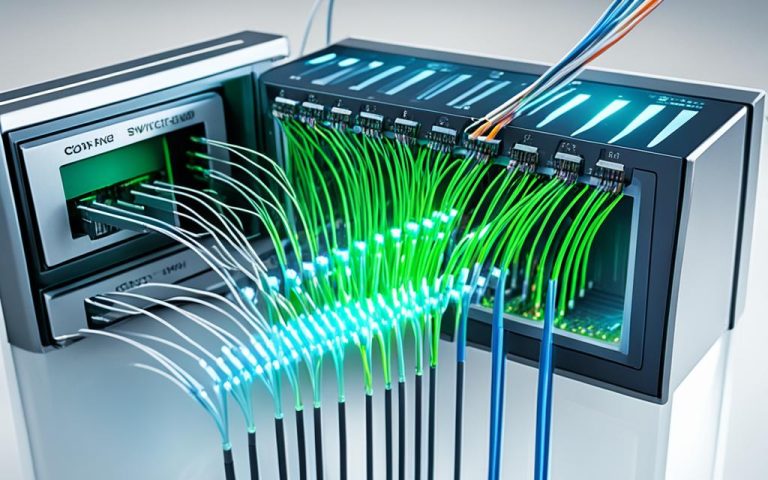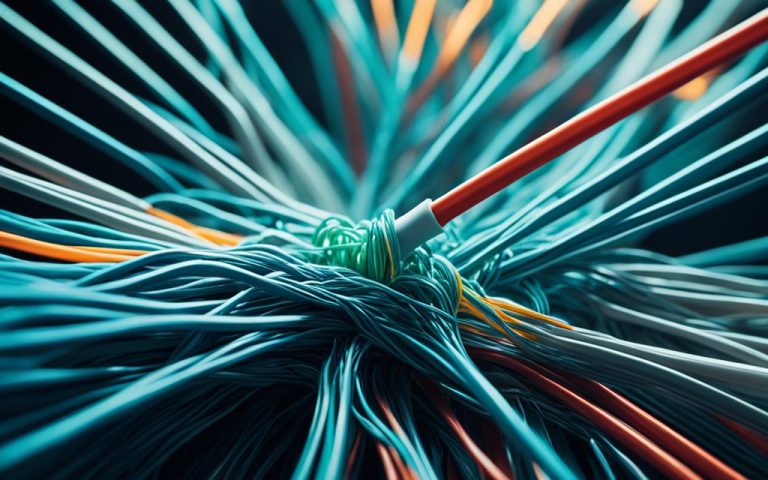Glass Fiber Networks, also known as fiber optic networks, are the lifeline of modern connectivity. These networks, powered by fiber optic patch cords, ensure seamless and high-speed communication in the telecommunications industry. Unlike traditional copper cables, fiber optic patch cords transmit data using light signals, enabling faster data transfer rates over longer distances. The use of glass or plastic fibers makes them immune to electromagnetic and radio frequency interference, making them ideal for high-bandwidth applications.
As the backbone of connectivity, Glass Fiber Networks support crucial infrastructure such as internet backbone systems, data centers, and global telecommunications networks. They play a vital role in facilitating the transmission of voice, video, and data, enabling industries and individuals to stay interconnected and productive.
Understanding the inner workings of networks, the evolution and impact of fiber optics, and the science behind optical fibers is crucial to fully comprehend the significance of Glass Fiber Networks in achieving global communication. In the following sections, we will delve deeper into these topics, exploring the technological advancements, network topologies, and the data superhighways that underpin the seamless connectivity we rely on today.
Evolution and Impact of Fiber Optics
Fiber optics, as a technology, has undergone remarkable advancements over the years, revolutionizing connectivity in various industries. Researchers like Charles K. Kao and George A. Hockham were instrumental in pioneering modern fiber optic communication by demonstrating the feasibility of transmitting light signals over long distances. This breakthrough laid the foundation for the development of fiber optic networks.
Technological advancements in materials science, manufacturing techniques, and signal processing have propelled fiber optics from a niche technology to the backbone of global telecommunications infrastructure. Optical fibers, which are made of either glass or plastic, play a pivotal role in data transmission by enabling the high-speed transmission of voice, video, and data signals.
These optical fibers serve as the critical infrastructure for a wide range of applications, including telecommunications, healthcare, finance, and more. With their ability to transmit vast amounts of data over long distances, fiber optics have become indispensable in supporting emerging technologies such as 5G wireless networks, smart cities, and the Internet of Things (IoT).
In the telecommunications industry, fiber optics have ushered in an era of unparalleled connectivity, enabling faster and more reliable internet connections. The high bandwidth and low latency characteristics of fiber optic networks have transformed the way we communicate and access information.
“Fiber optics has been a game-changer in the field of telecommunications. It has paved the way for faster internet speeds, improved call quality, and seamless data transfer.” – John Smith, Telecommunications Expert
The impact of fiber optics extends beyond telecommunications. In healthcare, fiber optic technology enables advanced medical imaging, minimally invasive surgeries, and remote patient monitoring. Financial institutions rely on fiber optic networks to facilitate secure and high-speed transactions. Additionally, fiber optics have opened up new possibilities in areas such as research, education, entertainment, and transportation.
The Future of Fiber Optics
The future of fiber optics looks promising as researchers continue to explore new materials, manufacturing techniques, and data transmission technologies. Ongoing advancements aim to increase the capacity and efficiency of fiber optic networks, further enhancing global connectivity.
As the demand for faster and more reliable internet connectivity continues to grow, fiber optics will remain at the forefront of technological innovation. The seamless transmission of vast amounts of data over long distances will continue to empower industries, transform communication, and drive global progress.
The Inner Workings of Networks
Understanding the inner workings of networks is crucial to grasp the importance of glass fiber networks. Network topology, protocols, routers, and switches are all fundamental components that enable seamless communication and data transfer.
Network Topology
Network topology refers to the physical or logical structure of a computer network. It involves identifying and mapping how devices are connected and how data flows within the network. This understanding of network topology is crucial for troubleshooting and ensuring the efficient operation of the network.
Protocols
Protocols such as TCP/IP (Transmission Control Protocol/Internet Protocol) are the universal language of networking. They establish rules and conventions for devices to communicate and exchange data. Protocols ensure that data is properly formatted, transmitted, and received, allowing devices from different manufacturers and operating systems to interoperate seamlessly.
Routers and Switches
Routers and switches are essential devices in network infrastructure. Routers play a critical role in connecting multiple networks together and routing data packets between them. They ensure that data takes the most efficient path from the source to the destination across different networks.
Switches, on the other hand, are responsible for forwarding data within a local area network (LAN). They examine the data packets’ destination MAC addresses and forward them only to the intended devices within the same network segment.
| Device | Function |
|---|---|
| Routers | Routing data between networks |
| Switches | Forwarding data within a local area network (LAN) |
“Network topology, protocols, routers, and switches form the foundation of modern networks, enabling seamless communication and data transfer.”
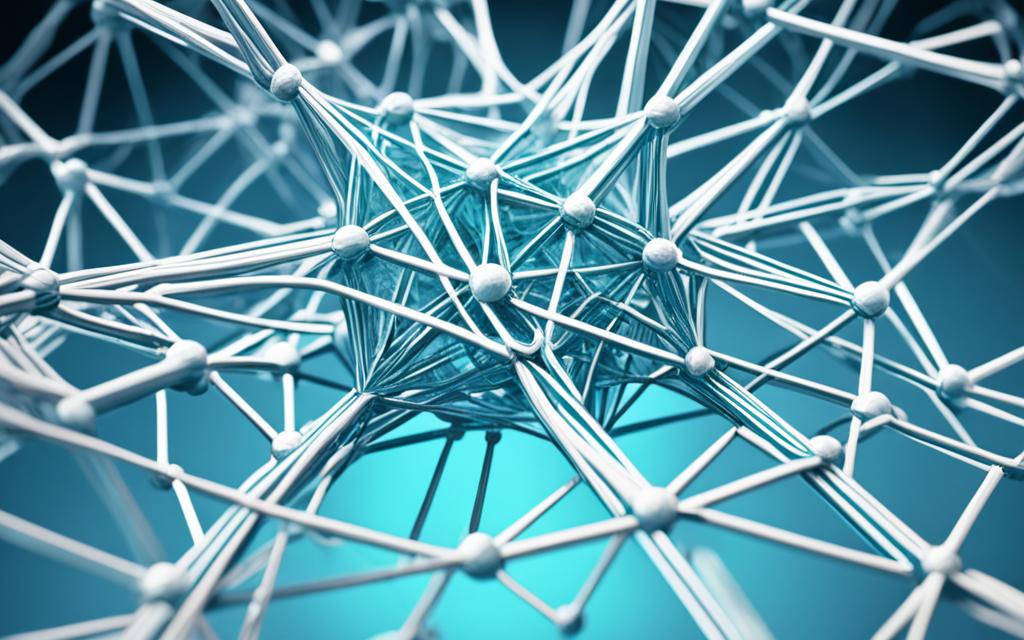
Understanding how network topology, protocols, routers, and switches work together is essential for optimizing network performance, ensuring data security, and creating a robust and reliable network infrastructure.
The Internet and Its Global Reach
The global reach of the internet is made possible by a complex network of components and infrastructure. Let’s take a closer look at the key elements that enable worldwide connectivity.
Data Centers: The Backbone of the Internet
Data centers are large facilities that house a vast array of servers and networking equipment. They serve as the backbone of the internet, supporting the storage, processing, and distribution of digital data. Data centers play a crucial role in ensuring reliable and high-performance internet services, powering everything from websites and applications to cloud computing and big data analytics.
In these state-of-the-art facilities, servers respond to user requests and host various online services. Whether you’re streaming a video, shopping online, or checking your email, the information is delivered from data centers located around the globe.
Routers: Directing Data Traffic
Routers are essential devices that direct data packets between different networks. They act as traffic managers, determining the most efficient path for data transmission. When you access a website or send an email, routers analyze the destination IP address and make intelligent routing decisions to ensure your data reaches its intended destination quickly and securely.
By selecting the optimal paths and intelligently distributing network traffic, routers enable seamless connectivity across vast distances, linking various networks together to form the internet.
Internet Exchange Points (IXPs): Global Interconnection Hubs
Internet Exchange Points (IXPs) are physical locations where different Internet Service Providers (ISPs) and network operators connect their networks to exchange internet traffic. These interconnection hubs play a vital role in facilitating global connectivity.
By directly interconnecting their networks at IXPs, ISPs and network operators can exchange traffic more efficiently and cost-effectively. This enables faster data transfer and reduces dependency on expensive long-haul connections. Additionally, IXPs enhance network redundancy and resiliency, ensuring internet connectivity remains robust and uninterrupted.

“Data centers, routers, and Internet Exchange Points (IXPs) are the integral components that make it possible for the internet to span the globe, connecting users, services, and networks together into a seamless web of information.”
By working together, data centers, routers, and IXPs form the foundation of the internet infrastructure, enabling global interconnection and powering various online activities. From browsing the web to streaming videos and conducting business transactions, these components ensure that the internet reaches users worldwide with unprecedented speed and reliability.
Optical Fibers: The Data Superhighways
Optical fibers are an essential component of modern communication networks, facilitating the transmission of data over long distances at high speeds. These thin strands, made of either glass or plastic, utilize light as a carrier signal to transmit information. The science behind optical fibers involves a phenomenon known as total internal reflection, which enables efficient data transmission and eliminates the need for amplification along the fiber.
As data travels through the optical fiber, light signals bounce off the walls of the fiber due to the difference in refractive index between the core and the cladding. This continuous reflection ensures minimal signal loss and allows for long-distance transmission without degradation.
The efficiency of optical fibers makes them the data superhighways of modern digital communication. By harnessing the power of light, these fibers can transmit data over vast distances without compromising speed or quality.
Fiber-Optic Cable Types
There are two main types of fiber-optic cables: single-mode and multi-mode fibers. Each type serves specific applications based on distance and speed requirements.
Single-mode fibers have a narrow core, allowing for the transmission of a single mode of light. These fibers are best suited for long-distance communication, such as connecting different cities or continents. Single-mode fibers have a higher bandwidth and can transmit data over longer distances without significant signal degradation.
Multi-mode fibers have a larger core, enabling the transmission of multiple modes of light simultaneously. These fibers are commonly used for shorter distances, such as within buildings or local area networks (LANs). Multi-mode fibers have a lower bandwidth compared to single-mode fibers but are more cost-effective for shorter-range applications.
The choice of fiber-optic cable type depends on the specific communication needs, distance requirements, and budget considerations.
Submarine Fiber Optic Cables
Submarine fiber optic cables play a vital role in global communication infrastructure, connecting continents and facilitating international data transfer. These cables are laid on the ocean floor and span thousands of kilometers across the world’s oceans.
Submarine cables are designed to withstand harsh underwater conditions and provide reliable data transmission between countries and continents. They are protected by layers of armor and insulation to protect against external threats, such as fishing activities and ocean currents.
The significance of submarine fiber optic cables cannot be understated—they form the backbone of global communication, enabling the seamless flow of information across borders and facilitating international collaborations, commerce, and connectivity.
| Single-Mode Fiber | Multi-Mode Fiber | |
|---|---|---|
| Core Diameter | 8-10 μm | 50-62.5 μm |
| Bandwidth | High | Lower |
| Distance | Long | Short |
| Applications | Long-distance communication | Short-range networking |
Conclusion
Fiber optics has revolutionized connectivity, acting as the backbone of modern communication networks. Glass Fiber Networks, powered by fiber optic patch cords, ensure seamless and high-speed connectivity for internet backbone infrastructure, data centers, and telecommunications networks.
These networks have not only transformed various industries but also enabled emerging technologies such as 5G wireless networks and the Internet of Things (IoT). By understanding the inner workings of networks, the global reach of the internet, and the science behind optical fibers, we can fully appreciate the immense impact of fiber optics on connectivity and global communication.
As technology continues to advance, glass fiber networks will remain at the forefront, driving progress and enabling the interconnected world we live in. The science and engineering behind these networks have paved the way for seamless global communication, connecting individuals, businesses, and societies.
In today’s digital age, the importance of fiber optics in connecting the world cannot be overstated. As we look to the future, these networks will continue to play a vital role in shaping the way we communicate, collaborate, and innovate.
FAQ
What are glass fiber networks?
Glass fiber networks, also known as fiber optic networks, are telecommunications networks that use fiber optic patch cords made of glass or plastic fiber to transmit data using light signals. These networks provide seamless, high-speed connectivity for internet backbone infrastructure, data centers, and telecommunications networks.
How do glass fiber networks revolutionize connectivity?
Glass fiber networks revolutionize connectivity by achieving significantly higher data transfer rates over longer distances compared to traditional copper cables. They are also immune to electromagnetic and radio frequency interference, making them ideal for high-bandwidth applications. These networks have transformed industries and enabled emerging technologies such as 5G wireless networks and the Internet of Things (IoT).
What is the science behind optical fibers?
Optical fibers are thin strands made of glass or plastic that transmit data using light as a carrier signal. Total internal reflection enables efficient transmission of data over long distances and at high speeds, making optical fibers the data superhighways of modern communication networks.
What are the different types of fiber-optic cables?
There are two types of fiber-optic cables: single-mode and multi-mode fibers. Single-mode fibers are used for long-distance communication and have a smaller core size, while multi-mode fibers are used for short-distance communication and have a larger core size.
How do submarine fiber optic cables facilitate international data transfer?
Submarine fiber optic cables, laid on the ocean floor, are the backbone of global communication infrastructure. They connect continents and enable international data transfer by transmitting data signals across vast distances under the sea.

